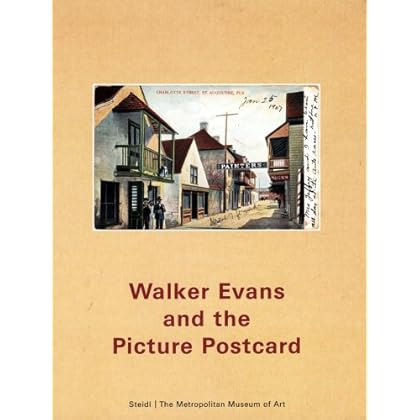Walker Evans and the Picture Postcard
Category: Books,Crafts, Hobbies & Home,Antiques & Collectibles
Walker Evans and the Picture Postcard Details
The American postcard came of age around 1907, when postal deregulations allowed correspondence to be written on the address side of the card. By 1914, the craze for picture postcards had proved an enormous boon for local photographers, as their black-and-white pictures of small-town main streets, local hotels and new public buildings were transformed into handsomely colored photolithographic postcards that were reproduced in great bulk and sold in five-and-dime stores in every small town in America. Postcards met the nation's need for communication in the age of the railroad and Model T, when, for the first time, many Americans often found themselves traveling far from home. In the Walker Evans Archive at New York's Metropolitan Museum of Art, there is a collection of 9,000 such postcards amassed by the great American photographer, who began his remarkable collection at the age of 10. What appealed to Evans, even as a boy, were the vernacular subjects, the unvarnished, "artless" quality of the pictures and the generic, uninflected, mostly frontal style that he later would borrow for his own work. The picture postcard and Evans' photographs seem equally authorless, appearing as quiet documents that record a scene with both economy of means and simple respect. This volume demonstrates that the picture postcard articulated a powerful strain of indigenous American realism that directly influenced Evans' artistic development.Walker Evans (1903-1975) was the progenitor of the documentary tradition in American photography. American Photographs (1938), published to accompany his first retrospective at The Museum of Modern Art, New York, is widely considered the monograph against which all other photography books must be judged.

Reviews
This book is over 400 pages, the vast majority of them images of postcards from Walker Evans' personal collection of postcards. These are supremely well reproduced at actual size, and one can indeed enjoy looking at the postcards. But this is not a typical postcard collection (if there is such a thing) - there are very few real photo postcards, for example, and many extremely mundane images of urban buildings and the like (some might be tempted to dismiss it as an enlarged version of "Boring Postcards"). Most postcard collectors tend to focus on one or a few genres, or places, not the seemingly random and disparate set of images represented here.What marks this as a significant collection, of course, is that it was Walker Evans', and from that perspective it is very interesting. We see something of how the great photographer saw images. Adding to this are Evans' own words, in the form of his three articles published in Fortune magazine (reproduced here in facsimile) but even more so in his 1964 "Lyric Documentary: An illustrated transcript of a lecture ... presented at Yale University", in which he tries to develop a visual poetics of imagery. His Yale audience was unappreciative; he called them "a bunch of Yahoos, in imitation work clothes.... They thought I was there to entertain them and lo and behold I showed some photographs and had them rolling in the aisles with laughter. I was utterly defeated. I took these things seriously and I still do" (p.33).Being myself both a scholar of visual images and a collector of postcards (and something of a photographer) I really appreciate both his efforts to think through postcard images, and his appreciative eye. Collectors seeking a book on postcards may be disappointed by this one. Those interested in Walker Evans' photography will find only a little here (11 pages of his postcard-format photographs). But readers interested in how we see, how meaning is constructed through the visual, will find here a good deal to think with.


